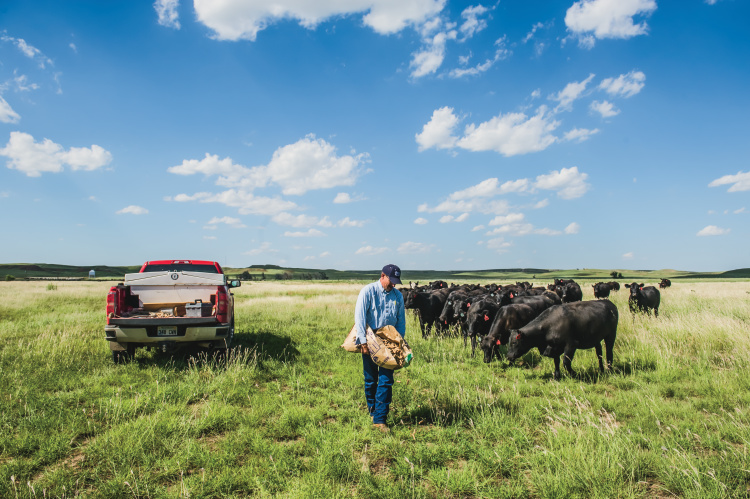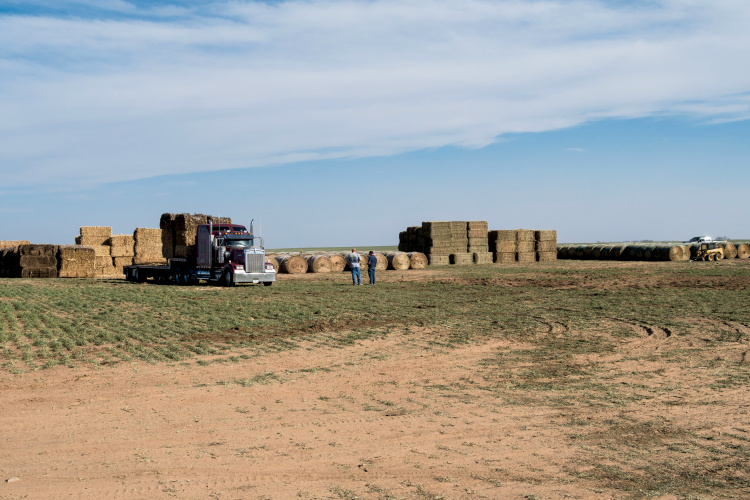Home > Kansas > Kansas Environment > Volunteers Across the Country Help Kansas Rebuild From Wildfire Devastation
Volunteers Across the Country Help Kansas Rebuild From Wildfire Devastation
In partnership with:

Within 24 hours, the first hay donations made their way to Clark County, where wildfires in March 2017 burned 6,800 bales of the cattle forage on the Gardiner family ranch alone.
Soon after, farmers from throughout rural America sent milk replacer for orphan calves. Then, the supplies to replace and mend fences arrived. People volunteered to fix fences and remove debris. And even a food wagon parked for a week to feed the volunteers.
The power of people rose from the ashes left by record-breaking wildfires that scorched Kansas ranch and farmland. Today, the sight of fresh fences and cattle returning to greening pastures shows that Kansans will recover, driven by their will and accountability to rural America.
“With all these gifts people have given, it creates accountability on our part to persevere,” says Dr. Randall Spare, a 27-year veterinarian at Ashland Veterinary Center in Clark County. “People across the country have raced to support us. I am going to do my best effort to be a good steward of that gift and multiply it and work to have our area operations succeed.”

Power of People
On March 6, 2017, Mark Gardiner worked around the clock fighting wildfires that took his family’s home, 600 head of cattle, 265 miles of fence and 6,800 bales of hay on the fifth-generation family ranch, Gardiner Angus Ranch.
“I choose to look at a lot of this as an opportunity, and frankly, the opportunity to understand how truly good people are has been very touching and very hard to comprehend,” he says. “Even to this day, people are still helping and working toward helping this community recover.”
The unprecedented wildfires leaped across two-thirds of Clark County, which comprised a large percentage of the 1.2 million acres that burned in Kansas, Oklahoma and Texas. Spare says ranchers in Clark County alone lost in the neighborhood of 6,000 calves and cows, many of them near calving. They lost a staggering amount of hay and miles of fence. Homes and buildings burned, too.
But perseverance prevailed and support spread as quickly as the fires.
“There hasn’t been a second thought about rebuilding and moving forward,” Gardiner says. “The action has been continuous from the second it happened: Let’s get to work and get it rebuilt.”
The local feed store collected donations of supplies that came from across the United States. The local bank set up emergency lines of credit and lowered interest rates on debt to help ranchers. Kids spent spring break tearing out fences and cleaning up rubble. Kansas 4-H clubs volunteered to bottle-feed orphaned calves. For a time, volunteers spent 18 hours a day unloading donations of hay at collection points. Two men drove in from Pennsylvania just to help. The list goes on.

Organizing Chaos
Such overwhelming support demanded a command center that could assess damages and needs, and accept and distribute support and supplies. Spare and Gardiner were among community leaders who formed a task force of local ranch and business owners to do just that. The task force worked so well that Spare says state government scaled back its emergency support services.
“My ancestors went through drought and blizzards and obviously the Dirty Thirties and Black Sunday,” says Gardiner, a fourth-generation rancher in Clark County. “I’ve often wondered if my generation had any resemblance to their generation or my father’s generation on the ability to step up and do what needs to be done. And more importantly, to help their fellow man. I’m happy to say I think we do.”



